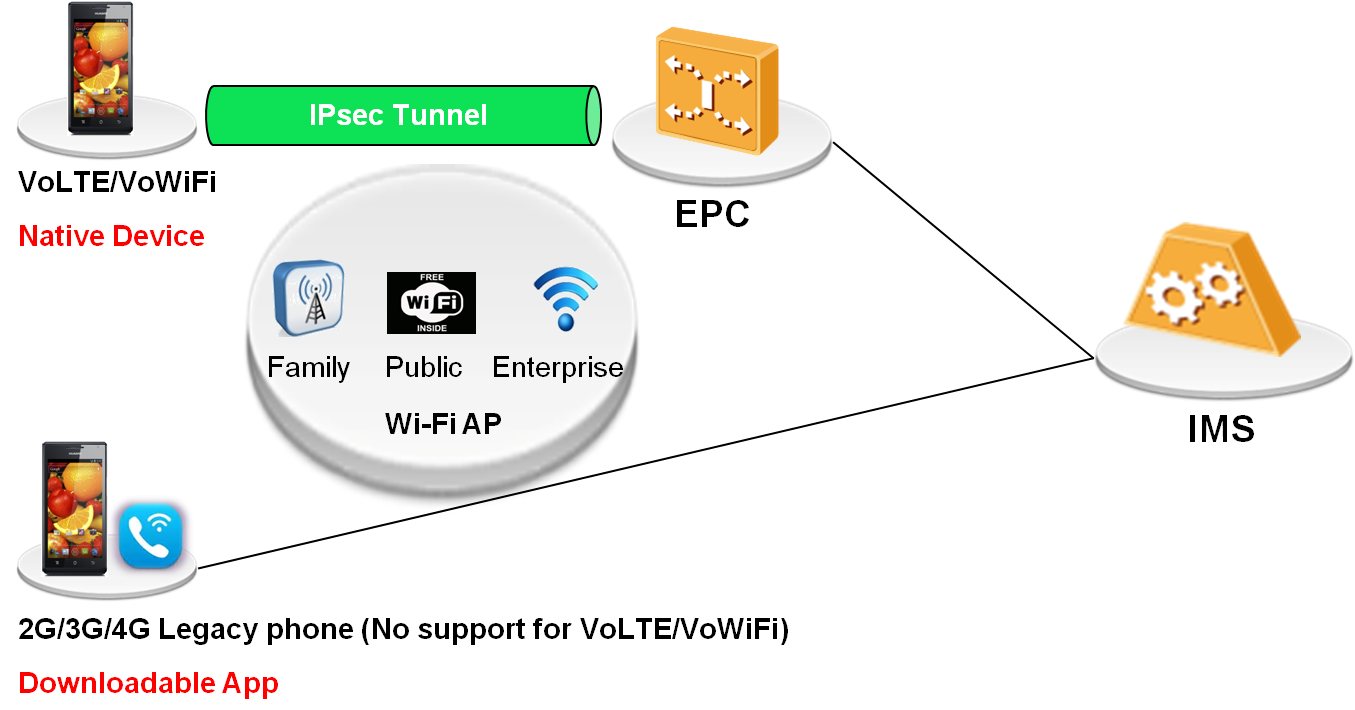The purpose of this document is to provide a product and technical insight into the implementation of VoWiFi from a practical perspective to complement the VoWiFi Service Design and Implementation Guide available under GSMA IC2 website (see reference [1]).
The scope of the document will be based on the following areas of the VoWiFi implementation:
- Overview of the Chinese market
- Business rationale of VoWiFi
- Technical solution
- Lessons learned from technical setup
- Charging and Billing approach
- International Roaming approach
- Emergency Services
Overview of the Chinese market
From the perspective of the compatibility with the 2G/3G network, VoLTE deployment is a complicated process. China Unicom has begun to provide VoWiFi service to supplement cellular coverage of calling service from the second half of 2016.
China Unicom is the first MNO to launch VoWiFi to supplement the cellular coverage in areas of weak signal. The VoWiFi service is seen as complementary to cellular voice calling service and a quicker method to solve customers’ complaints about poor indoor coverage. As VoIP breakout to the operator network is disallowed, VoWiFi provides a good service and enhances the user experience based on MNOs network. In the Chinese market, there are a lot of open market devices sold via multiple channels, such as OEM official website, B2C website, retail store and MNO’s shop and so on.
Business rationale of VoWiFi
VoWiFi is seen as an opportunity to enhance user experience and differentiated business means for market competition. VoWiFi is particularly suitable for home without cellular coverage or office building without indoor coverage. The main advantage of VoWiFi is that the user has the same calling experience as cellular and the extending the calling coverage to indoor places which are difficult to reach by cellular coverage.
Technical solution
The VoWiFi solution based on IMS has two sub solutions for different scenario, including Native Solution and App Solution as shown below:

VoWiFi Technical solution
Native dialling is the target solution to provide a good user experience. For the users of a native VoWiFi device, they can handover between VoWiFi and VoLTE seamlessly and send/receive SMS via Wi-Fi access normally. But this solution is subjected to various factors, including the VoWiFi device penetration (actually no VoWiFi native device in China Market), higher device replacement cost (only high-end device supports VoWiFi), etc.
Although the higher requirements are met by the Native Solution, the App Solution reduces those requirements on the device in order to retain the VoWiFi core features. The App Solution also does not support seamless handover with VoLTE, but the App can be deployed into the majority of devices in the market. It can also work seamlessly with RCS messages described in [2]. The SMS feature and Value Added Service is not provided on the App Solution.
For the downloadable App, it can access VoWiFi via any Wi-Fi access, directly connected to the SBC only providing the Internet access service (independent with VoLTE SBC). The IMS authentication method of VoWiFi App is SIP Digest, for which the necessary information obtained is based on the HTTP procedure described in [3].
The terminating leg selection is implemented by the terminating side of the IMS Application Server.
For security reasons, the signal and media transport between SBC and App is encrypted and uses SIP over TLS and SRTP methods.
Lessons learned from technical setup
The VoWiFi App Solution can quickly solve the problem of poor indoor coverage.
For compatibility with a VoLTE device with an installed App for VoWiFi, the VoWiFi App uses different IMSI and IMPU with VoLTE to register to the same IMS. From the network side, there are two independent registration status when the UE overlaps coverage in LTE and Wi-Fi areas.
From a regulatory perspective, the VoWiFi App should restrict the user to use the service only via Wi-Fi access, which implies the user cannot use this App via PS access and will receive a warning tip. Also the WiFi will take its location in the header of SIP INVITE when making a call. Hence the user should allow the VoWiFi App to use their location.
The App Solution provides an SDK for IMS based Calling capability to the MNO or its partners. The SDK can provide the E.164 based voice or video calling feature to 3rd party applications. It will derive more creative applications and provide new revenue method.
Charging and Billing approach
The charging methods of VoWiFi include free of charge, using calling minutes in user’s plan, charging with a specific rate and so on.
In terms of billing, the VoWiFi call is displayed as a special mobile call with an obvious identification on the invoice, the business call App or website.
International Roaming approach
VoWiFi roaming is only allowed to a user subscribed to any of the roaming packages.
The VoWiFi App can be restricted based on the user access location.
Emergency Services
Emergency calls cannot be made using a VoWiFi call. The VoWiFi App will automatically invoke the native dialler to make an emergency call via the cellular network.
References
[1] GSMA, VoWiFi Service Description and Implementation Guide, V2020.02 CR1003, 19/07/2016.
[2] GSMA, RCS Pre-Universal Profile for China, RCC.66.
[3] GSMA, Service Provider Device Configuration, RCC.14.